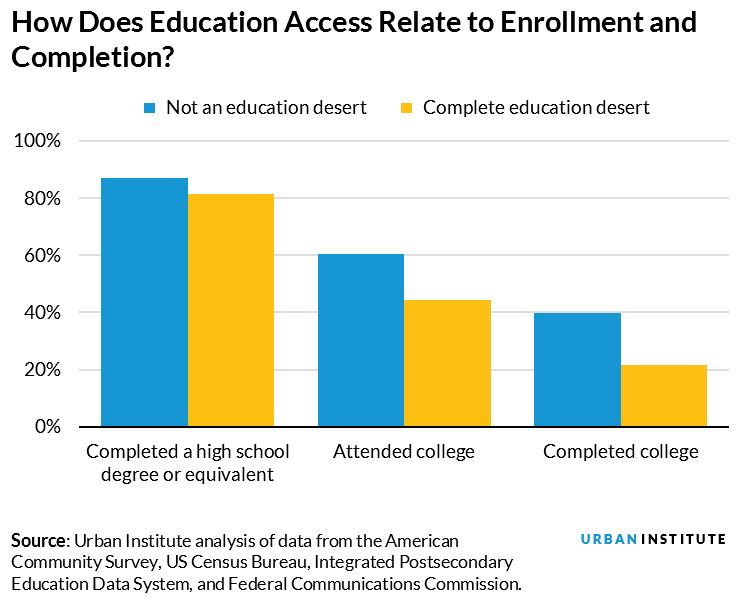
<p>Instructor Julie Wheeler, left, meets with student Branden Fox before the start of the English Composition class at the Arapahoe Community College campus in Castle Rock, CO. Arapahoe Community College is working with Douglas County Schools, Colorado State University and the Town of Castle Rock to build a $40 million collaboration campus in The Meadows part of Castle Rock, allowing for cheaper, more accessible degrees and workforce training. Photo by Kathryn Scott/The Denver Post via Getty Images.</p>
President Trump signed an executive order earlier this year seeking to expand broadband internet access in rural areas. This order highlighted how rural American communities could use broadband to “enrich student learning.” But expanding access to broadband does more than enrich learning—it provides opportunities for higher education where there previously may have been none.
For people who do not have a university nearby, online education may be the only avenue to pursue higher education. We estimate that 41 million American adults lack access to a physical university, and of those, 3 million also lack access to an internet connection suitable for online education. An additional 2 million adults lack access to online education but have a physical university nearby.
We define physical higher education deserts as areas where either there are no colleges or universities within 25 miles or there is a single community college as the only broad-access public institution within 25 miles. Using this definition, an area with a private institution and a selective public institution as the only two institutions within 25 miles would be defined as a physical education desert. We define online education deserts using the Federal Communications Commission’s benchmark for measuring broadband internet access. Complete educations deserts are both physical and online education deserts.
Which communities lack access to higher education?
The map demonstrates that complete education deserts are more likely to be found in the rural and western parts of the country, but that pockets of physical, online, or complete education deserts exist in nearly every state.
Although some students move to enroll in college, 38 percent of first-year students enroll at an institution less than 50 miles from their home. The farther prospective students live from a college or university, the less likely they are to enroll. Students with work or family obligations may be even less likely to move to enroll.
Only 1.3 percent of the US population lives in a complete education desert, but 11.8 percent of American Indians and Alaska Natives live in complete education deserts. A prior study on physical education deserts found that while people living in physical education deserts are primarily white, a disproportionately large number of Native Americans live in physical education deserts.
Communities without access to higher education have lower levels of educational attainment than those with access to both online and physical higher education. The gap in high school completion between people in a complete desert and those not in a desert is only 6 percentage points. But the gap in college attendance is 16 percentage points, and the gap in college completion is 18 percentage points.

Nationwide, college completion is a bigger issue than college enrollment, with nearly half of all college students failing to complete. For prospective students who can’t move out of an education desert, however, enrollment may loom larger.
To expand access to physical education, some have suggested that private or public selective institutions operating in deserts could form partnerships with local community colleges, which are better designed to serve their communities than private or selective institutions. Through these partnerships, local community colleges could find ways to expand degree options by improving the transfer and articulation process to the nearby selective four-year school.
To expand online access in education deserts, the federal government could decrease the cost of broadband deployment. In addition, the Federal Communications Commission recently inquired about benchmarking mobile broadband access and including both mobile and fixed broadband access in their analyses. Although these two are not viewed as substitutes, more needs to be understood about the differences between these mobile and fixed connections when it comes to caps on downloads and costs.
This study demonstrates what many Native Americans, rural Americans, and other Americans living in education deserts already knew: the internet has not untethered all of us from our geographic location. As long as broadband access depends on geography, place still plays an important role in access to higher education.
Let’s build a future where everyone, everywhere has the opportunity and power to thrive
Urban is more determined than ever to partner with changemakers to unlock opportunities that give people across the country a fair shot at reaching their fullest potential. Invest in Urban to power this type of work.